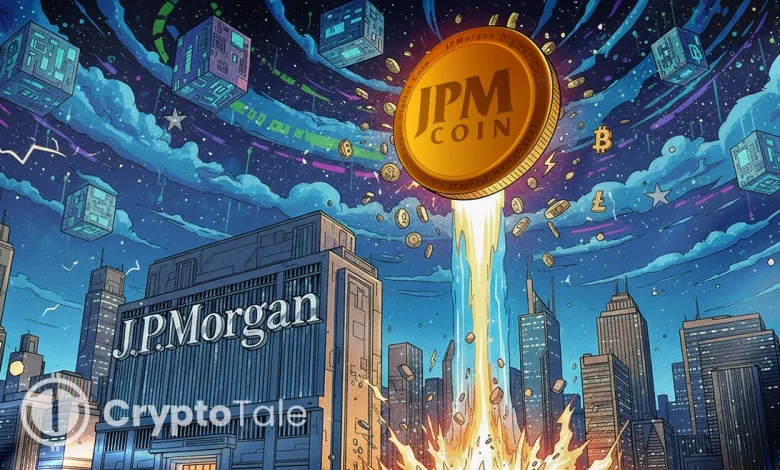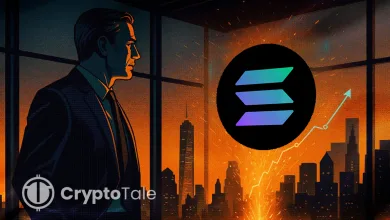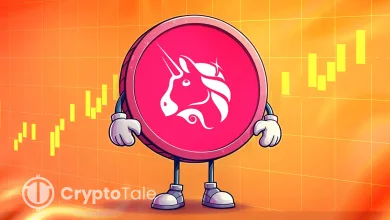JPMorgan Launches JPM Coin on Blockchain for Instant Payments

- JPMorgan unveils JPM Coin to process payments instantly through Coinbase’s Base blockchain.
- The token gives institutions faster settlement while keeping traditional finance trust intact.
- Its rollout signals growing bank adoption of blockchain in global financial operations.
JPMorgan Chase & Co. has started rolling out a blockchain-powered deposit token, JPM Coin, to institutional clients. The launch marks a major step as traditional banks expand their presence into digital assets. The token represents U.S. dollar deposits at the world’s largest bank and enables instant money transfers through Coinbase’s Base blockchain.
According to Naveen Mallela, global co-head of JPMorgan’s blockchain division Kinexys, this integration allows payments to process in seconds rather than days, removing the restrictions of standard business hours.
After several months of experimentation with Mastercard, Coinbase, and B2C2, the launch has been completed, and now real-time settlement and continuous financial activity are possible. JPMorgan’s presentation of the token on various blockchains and the addition of multi-currency support are subject to approval from regulators. This step is a great amplification of JPMorgan’s blockchain roadmap.
Institutional Integration and Market Reach
JPM Coin is now available to institutional clients as a means of making payments and managing liquidity more efficiently. The token has already been accepted as collateral in Coinbase, which is an indication of its presence in the crypto-linked financial infrastructure.
A difference between stablecoins and deposit tokens like JPM Coin is that the latter are always backed by client deposits, which means they can also earn interest. The securities are digitized rights to the money; thus, the institutions can carry out transactions based on the blockchain without having to exit the conventional banking system. This characteristic makes them very attractive to regulated investors who demand both speed and compliance.
On the other hand, conventional stablecoins are entirely dependent on reserves but rarely generate yield. JPM Coin connects this gap by combining the adaptability of blockchain with the safeguarding of banking trust. This strategy is changing the way institutions manage large-scale settlements across borders and among different asset classes.
Expanding Blockchain Adoption Among Banks
The program’s introduction is framed by the larger interest shown by Citigroup, Deutsche Bank, Banco Santander, PayPal, HSBC, and Bank of New York Mellon, which are all looking into the application of digital cash that corresponds to their fiat currency.
The main purpose of these initiatives is to cut costs and speed up settlements, with particular reference to payments made across borders. This move is a sign of global unification in the financial industry, which is where the adoption of blockchain technology and its integration with the current systems of traditional financial institutions are signs of that global unification.
The project is also in compliance with U.S. laws under the Genesis Act that regulates the use of dollar-backed digital assets. Although JPM Coin is not a stablecoin, it is categorized in the same digital payment ecosystem and, at the same time, offers more options due to its possible interest-earning attributes.
Related: JPMorgan’s Bitcoin ETF Stake Soars, ETH Cut to Smaller Sums
The Road Ahead for JPM Coin
The largest institutional clients of JPMorgan are expected to be the first ones to receive JPM Coin. Eventually, the bank will add cross-border payments and multiple currency support to the features it offers. The instant-settlement capability comes with efficiency gains for payroll systems, corporate treasuries, and cross-border liquidity management, among other applications.
Through this project, it becomes clear that big financial institutions are already combining the most reliable aspects of traditional finance with the most innovative and disruptive features of blockchain technology. Suppose the project turns out to be successful; it is the first step toward the adoption of tokenized banking with continuous and real-time institutional payments operating even outside regular business hours.





